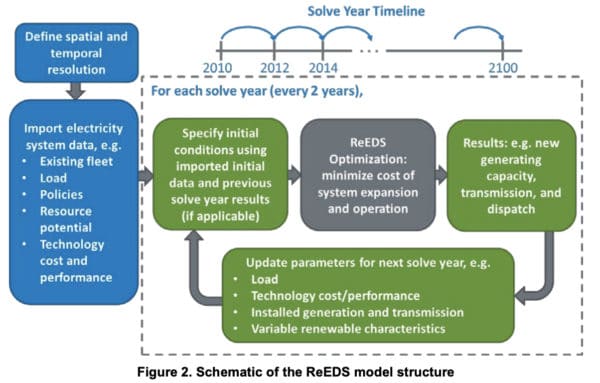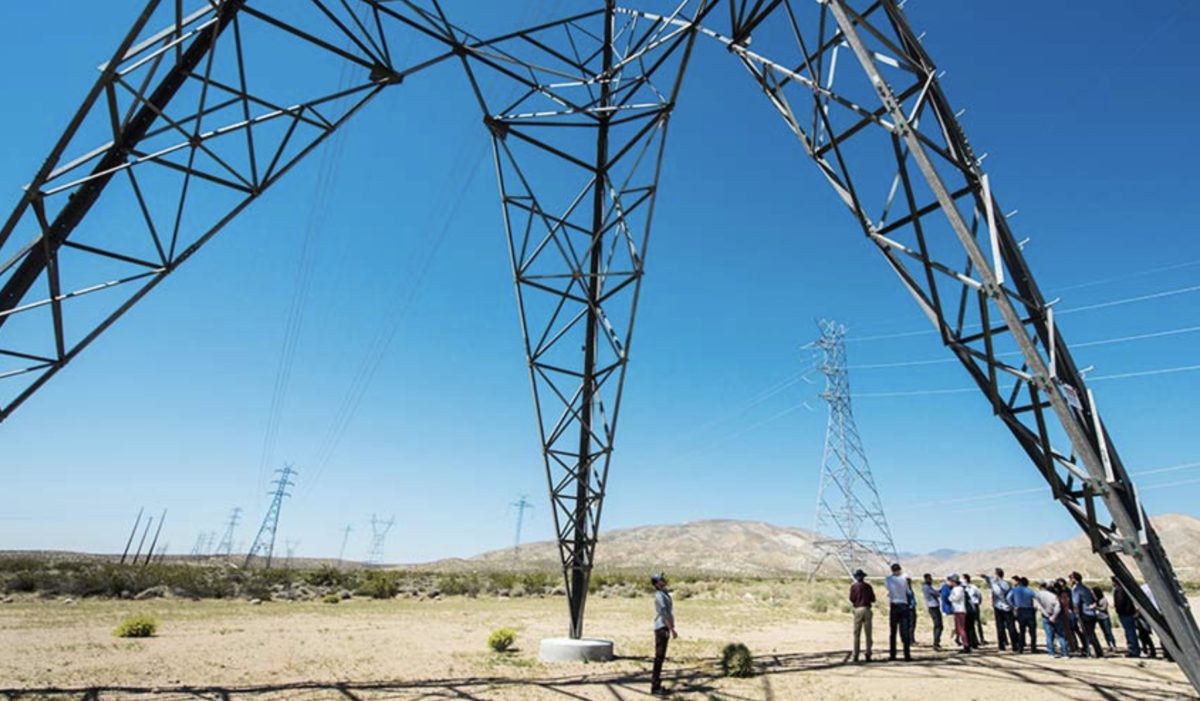The National Renewable Energy Laboratory (NREL) has made its “flagship capacity planning model” freely available to all. NREL uses the model to project the deployment of renewables, and now you can make your own projections, based on modeling inputs that you choose—for example, regarding the future costs of solar, wind, and storage.
NREL has developed the model over 18 years, and hopes that in sharing the model, “others can build on what we have created to further the research and analysis happening in this space,” said NREL Senior Energy Analyst Wesley Cole, who led efforts to release the model.
Possible uses for the model include:
- Educating students about the renewables transition
- Educating state utility regulators about how capacity planning models work, so they may better understand utility integrated resource plans
- Evaluating the effect of a national renewable portfolio standard, or a carbon price
- Being the first one on your block to run this model of the entire U.S. electric grid.
The optimization model, known as ReEDs, projects generation and transmission through 2050, says an NREL press release. The model “identifies the least-cost set of electricity sector investments required to meet energy, capacity, and ancillary service requirements.”
ReEDS was designed as a national-scale model, yet is built up of modeled “balancing areas” that “respect state boundaries,” says the documentation. As a result, the model may represent individual state regulations and incentives.
Much of what you need to run the model is provided here, including a link to download the model, plus documentation and a user guide—look for this image:

Also needed are a powerful computer, as described here under “Model Specifications,” along with a license for the GAMS (General Algebraic Modeling System) software, and an “appropriate solver.” NREL adds that the model is run from the command line and does not currently include a graphical user interface. The good news is that the model is built to work in Windows, and can be configured to run on Unix.
The user guide cautions:
Be deliberate in how you choose model inputs. The ReEDS default values are not necessarily “most likely,” and “high” and “low” input options are not based on specific probabilities of occurrence.
When NREL runs the ReEDS model, it derives cost and performance assumptions for solar, wind, and storage (plus other technologies) from its Annual Technology Baseline (ATB). NREL’s ATB provides low, mid, and “constant” cost projections, yet the mid-case projections for solar costs have been challenged as too high.
NREL will offer a webinar explaining the model and its uses on October 31.
For those who take the plunge, the documentation provides the following diagram, showing what your computer will do once you start the model run. The documentation explains that “ReEDS is structured as a sequence of individual, but interacting optimization problems, each representing a two-year period from 2010 to a maximum end year of 2100.”

This content is protected by copyright and may not be reused. If you want to cooperate with us and would like to reuse some of our content, please contact: editors@pv-magazine.com.








By submitting this form you agree to pv magazine using your data for the purposes of publishing your comment.
Your personal data will only be disclosed or otherwise transmitted to third parties for the purposes of spam filtering or if this is necessary for technical maintenance of the website. Any other transfer to third parties will not take place unless this is justified on the basis of applicable data protection regulations or if pv magazine is legally obliged to do so.
You may revoke this consent at any time with effect for the future, in which case your personal data will be deleted immediately. Otherwise, your data will be deleted if pv magazine has processed your request or the purpose of data storage is fulfilled.
Further information on data privacy can be found in our Data Protection Policy.